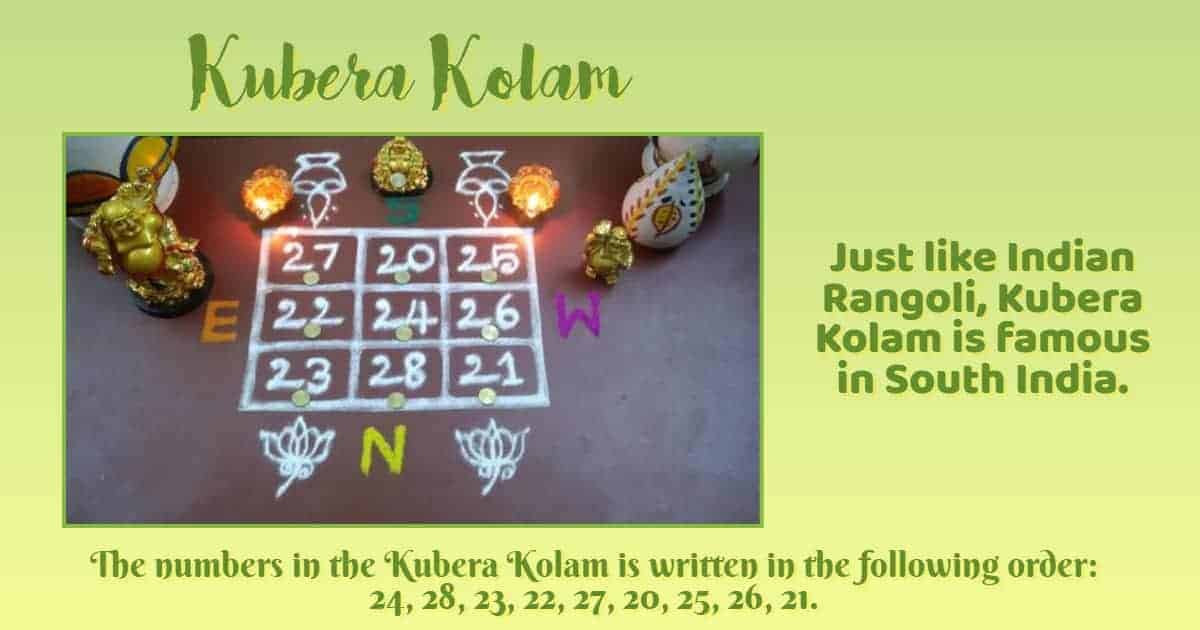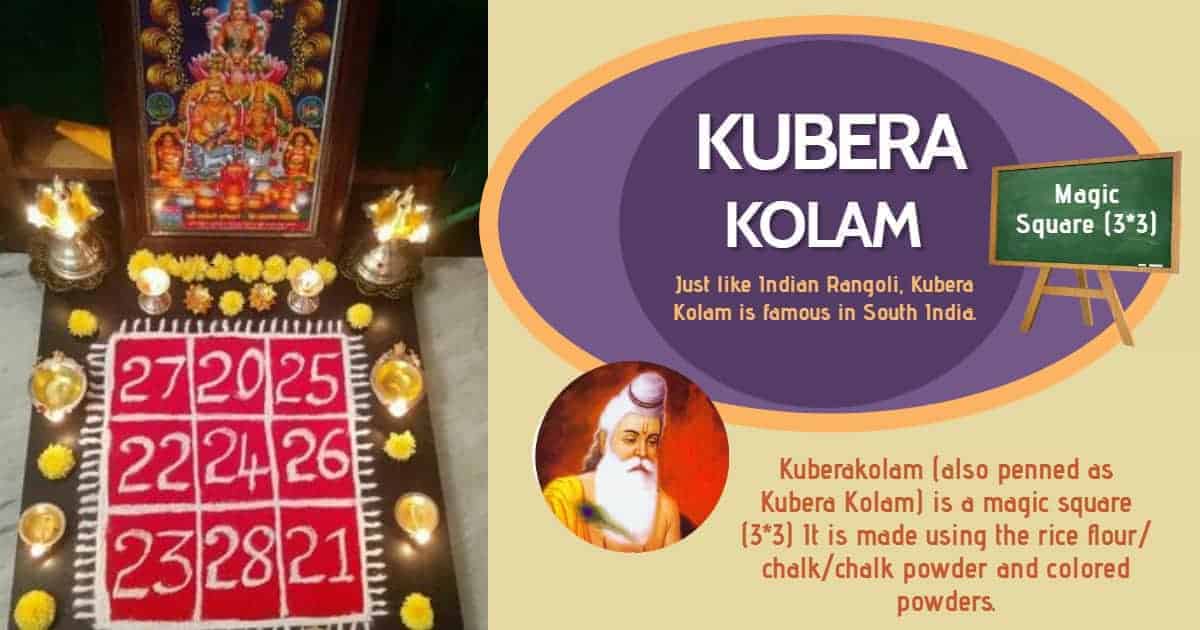Today, we explore the mystical Kubera Kolam—a sacred geometrical pattern believed to attract wealth and prosperity. Kubera rangoli design is more than art—it’s energy in motion and is rooted in tradition and symbolism. Let’s know more about it!
What is Kubera Kolam?
Just like Indian Rangoli, Kubera Kolam is famous in South India. Kuberakolam (also penned as Kubera Kolam) is a magic square (3*3) It is made using rice flour/ chalk/chalk powder and colored powders.
This is usually drawn on the floor of houses in states of India like Tamil Nadu, Andhra Pradesh. Worshipping the Kuberakolam as described in sacred texts is believed to bring wealth and good fortune.

According to Hindu Mythology, Kubera also called Kuvera, Kuberan, Kuber is considered as the Lord of wealth, the god-king of the semi-divine Yakshas. He used to rule Sri Lanka but was dethroned by Ravana after which he spent the rest of his life in Alaka in the Himalayas.
People in South India believe that those who worship Lord Kubera kolam will be blessed with wealth and prosperity. A kolam is a design made of lines and loops, painted in a grid model of dots.
Why is Kubera kolam called Magin Square?
The numbers in the Kubera Kolam are written in the following order: 24, 28, 23, 22, 27, 20, 25, 26, 21. A flower and a coin are usually placed in each cell.
In this magic square, the numbers in each column and row and the numbers in the main diagonals, all add up to 72 in all the cases.
To design the Kubera kolam, the lines are drawn with rice or chalk first to create the magic square. Usually, this square will be of 4*4 or 6×6 inches onwards.
Sages In India used to perform Kolam. Kolam has its origin in the Vedas. During the Vedic Days, lines in the kolam were made with natural colors and with rice. These were drawn before performing any kind of pooja or Yaga and Homam.
In Culture:
There is even mathematical logic behind it. In the olden days, people who used to stay in huts used to design these kolams because they used to consider it a good sign and even used to believe that those who have these designs drawn outside their home will be healthy, wealthy and happy. It was also an indication that someone is residing in that hut.


